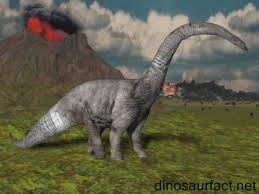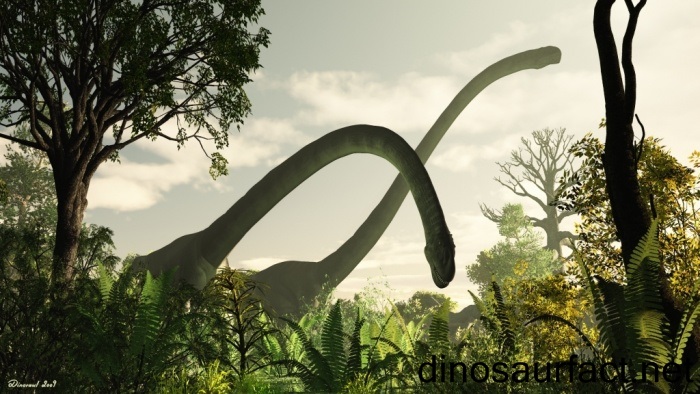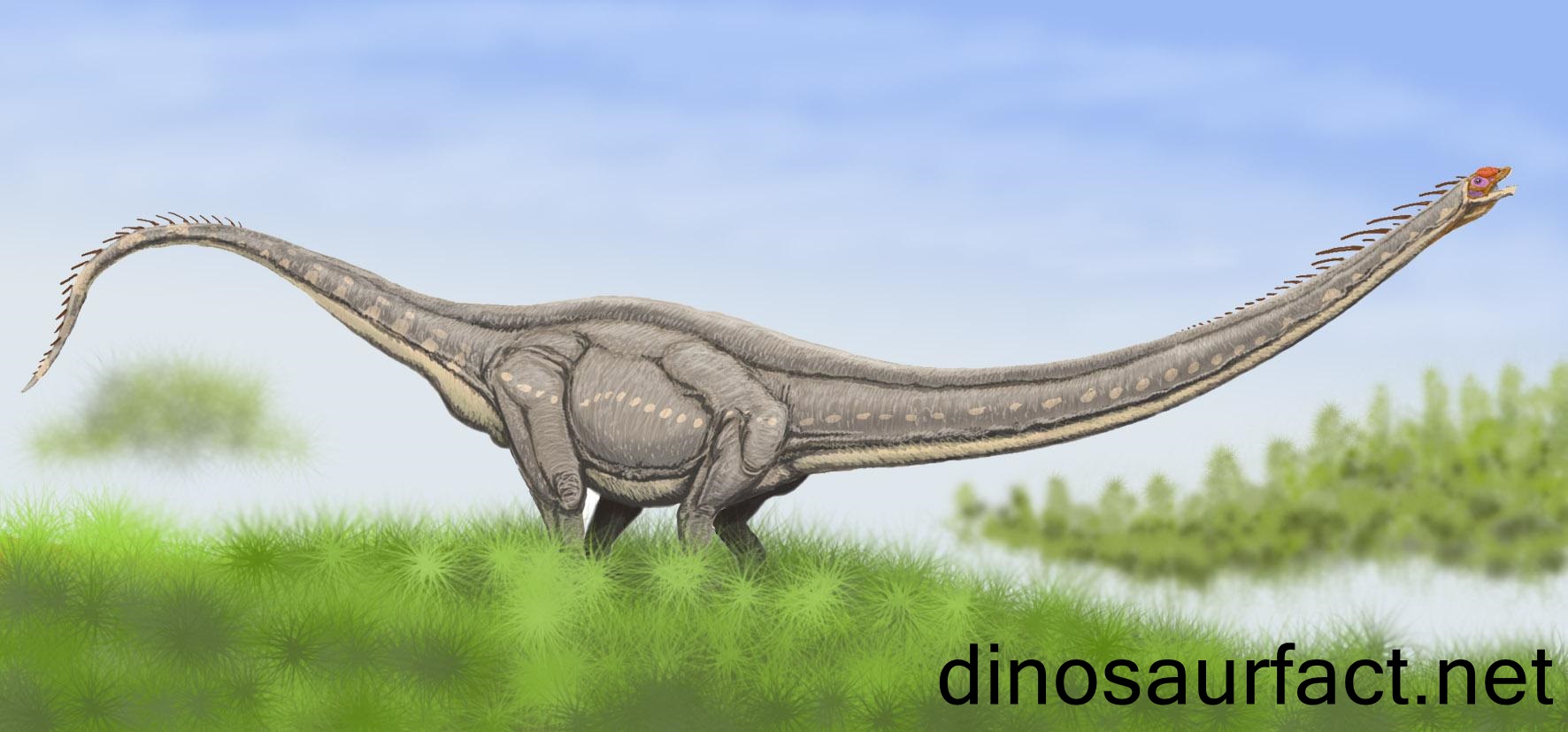 Click to visit the previous dinosaur bio
Click to visit the previous dinosaur bio
 |
|
 |
|
Kingdom: Animalia
Phylum: Chordata
Class: Sauropsida
Superorder: Dinosauria
Suborder: Sauropodomorpha
Family: Mamenchisauridae
Genus: Zigongosaurus
 |
|
 |
|
 |
|

Zigongosaurus pronounced zee-gong-aw-sore-us was discovered in China in the year nineteen hundred seventy. Zigongosaurus is basically a sauropod. There have been opinions from different schools of thought that Zigongosaurus was the actual Mamenchisaurus. The first specimen of Zigongosaurus discovered was fortunately very much complete. Six years later this fossil was given the name by Hou, Chao, and Chu. Since the fossil prototype was discovered at the Zigong province in China, hence the name. This is just another name for Zigong lizard. Zigong is the third largest province in Sichuan City.
The fossil prototype discovered was similar to other lizard hipped dinosaurs that were discovered along with others. The body skeleton was generally quadrapedal by nature and bore a quite simple body plan. Hence they were assigned the group of Sauropods. The sauropods were having similar structures of long neck and tail. Skull and brain in all the sauropods were generally small. They had a characteristic presence of nostrils high up on the skull. In other dinosaurs, the nostrils are generally located at the extremities of the snout. In fact the nostrils were very close to the eyes. In the later stages the sauropods got evolved to bear body armor which was covering partially or entire body and were used for defensive purposes against the predator dinosaurs.
- The Sauropods were found to be geographically spread throughout as found as evidence by fossil and track footprints. It has only been not found in Antarctica. Sauropods have been one of the most long lived dinosaurs. The Jurassic age represents the peak of the sauropod history. They were scattered in abundance and scoured the entire vegetation where they migrated after feeding on the entire vegetation.
Fossil studies suggest that these animals measured around thirty five feet in length. They had probably weighed around twenty tones. By habitat it was presumed that these animals were herbivorous in nature. By size scientists have presumed that they have probably been preyed upon by Yangchuanosaurus. However it should be mentioned that Zigongosaurus was a not as intelligent as compared to its size. Fossil studies indicate they had a much smaller body to brain ratio when compared to Stegosaurus. In fact Zigongosaurus was believed to be having a second brain in its hip region. There was also a presence of a long tail. This could be used as a defensive unit with the help of its lashing ability.
Fossil studies suggest that Zigongosaurus possessed a characteristic long neck along with a long tail and also with elephant like stubby legs. Their teeth were spoon shaped specialized enough to tear leaves and feed on them. Foot prints suggest that these animals generally used to travel in herds and they possibly migrated when food supply was depleted. Scientists have presumed that Zigongosaurus might have hatched from eggs. The fossil eggs of Zigongosaurus were found in a linear pattern. This lead to the presumption that Zigongosaurus were laying their eggs while walking. It also suggest that these animals lacked nesting behavior and did not exhibit parental care. It has been presumed that the life span of this animal could have been anything around one hundred years. Zigongosaurus was believed to be comparatively a slow mover. The movement speed of the animals was calculated on the basis of their morphological characters like length of the leg and the estimated body mass. The nature of the fossilized track ways were also kept in calculation.
However there were some confusion regarding the nomenclature as the fossil very much resembled the Omeisaurus. Omeisaurus also belongs to the same dinosaur group. From this point there have been researchers who have concluded the Zigongosaurus to be a Mamenchisaur because of the resemblance of the neural spines of the vertebrae of both these dinosaurs, these neural spines in both these cases have a characteristic distinct bifurcation in them. This is a feature that the Omeisaurus did not possess.
In the following part of the article the details of the fossil study of the remains shall be discussed. It should however be mentioned in the beginning that the knowledge on the Jurassic sauropods belonging to china have been very limited. Hence there has been confusion on the interpretation and the assignment of the fossil prototype.
- The specimen fossil that has been obtained includes maxilla and a partial mandible. The basi-occipital region of the skull has also been discovered. There were also discoveries of various skeletons that belonged to various dinosaurs that were also discovered and later scientifically assigned to the deserving genus. In the early days of assignment of this fossil prototype there had been suggestions that it belonged to the clan of Brachiosaurus.
It was the period of the nineteen hundred and eighties that the nomenclature of Chinese sauropods was continuously getting more and more complex. The confusions started with the discovery of Omeisaurus fuxiensis by three renowned paleontologists namely Dong, Zhou and Zhang. They based this nomenclature with fossil material from Zigongosaurus fuxiensis. Later they dismissed their own study and concluded that both the fossils belonged to the same animal. This led to the belief that the fossil prototype belonged to Omeisaurus or more specifically to Omeisaurus junghsiensis. Ten years passed. Now there was a shift of focus as the prototype was now assigned freshly to Mamenchisaurus by Zhang and Chen. They dismissed the previous assignment of this fossil prototype to Omeisaurus. However there had been an important observation by these two paleontologists that this fossil prototype was however discovered from a slightly different stratigraphic level when compared to both Omeisaurus and Mamenchisaurus beds.
However they still insisted that the fossil more closely resembles Mamenchisaurus. Hence they finally renamed it to Mamenchisaurus fuxiensis. The specific name refers to the river Fuxi. This assignment was later accepted though on a provisional level in most of the major reviews of sauropods that has taken place till date. But it is to be noted that Mr Valeire Martin Rolland has however been of a different opinion. He has been more in support of the fossil prototype to be given a proper separate genus.
Index
Extinct Profiles
 Triassic Dinosaurs
Triassic Dinosaurs Jurassic Dinosaurs
Jurassic Dinosaurs Cretaceous Dinosaurs
Cretaceous Dinosaurs Pterosaurs
Pterosaurs Marine Reptiles
Marine Reptiles Dinosaur Extinction
Dinosaur Extinction